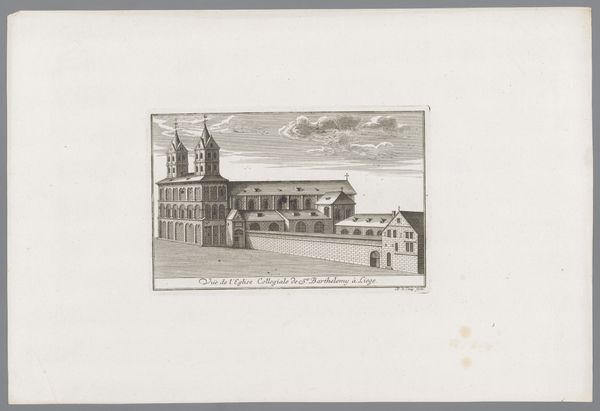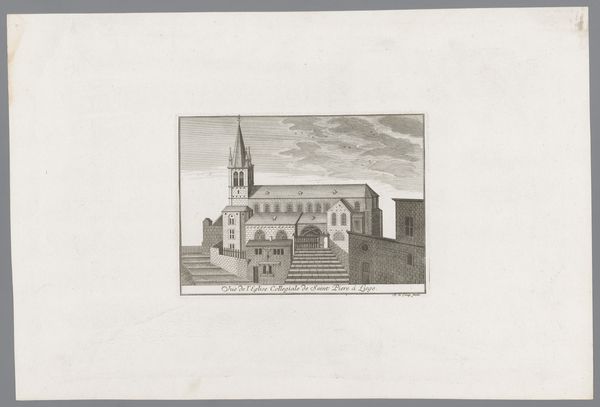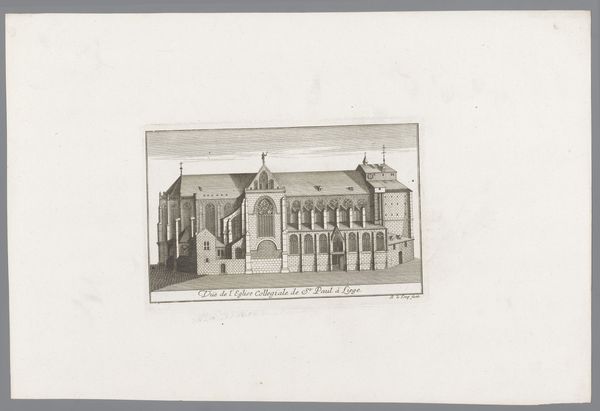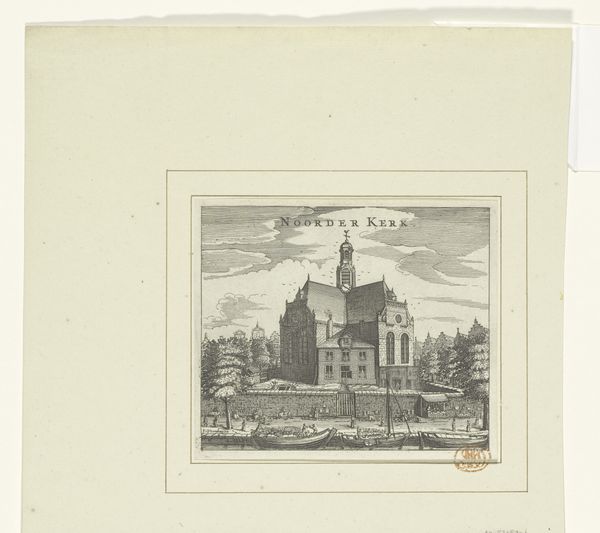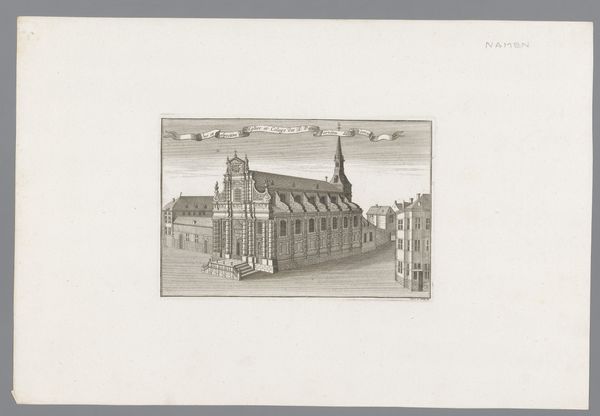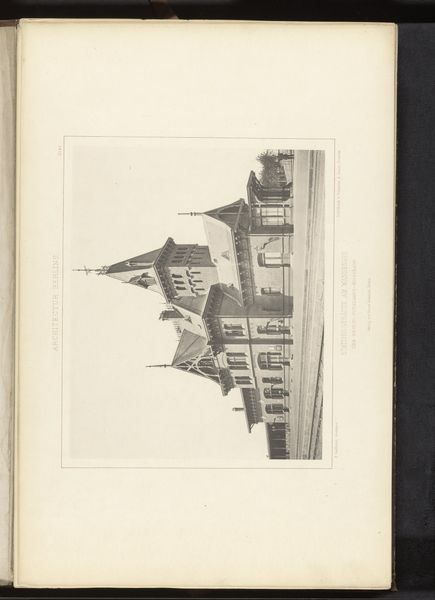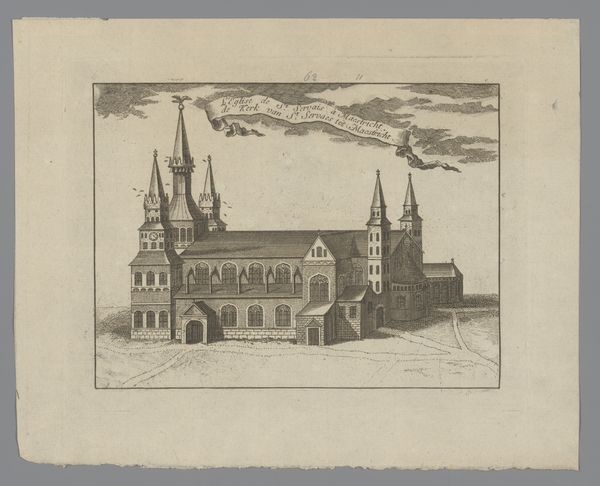
print, engraving, architecture
#
baroque
#
ink paper printed
# print
#
cityscape
#
engraving
#
architecture
Dimensions: height 145 mm, width 220 mm
Copyright: Rijks Museum: Open Domain
Editor: This is "Gezicht op de Heilig Kruiskerk in Luik," an engraving from the mid-18th century. It depicts a church. I’m immediately drawn to the crisp detail, almost like a photograph, yet it feels so distant, both in time and subject. What’s your take on this print? Curator: The precision is indeed striking, and it offers us a window into 18th-century Liège. But let’s think about what this print *does*, beyond just showing us a church. Who was its intended audience? Prints like these were often commissioned, serving as tools to showcase power and stability, projecting an image of established order within a rapidly changing society. How might this image contribute to reinforcing existing social hierarchies? Editor: So it’s not just a nice view, but a statement of authority? That’s not something I would have picked up on right away. It looks pretty standard architecturally. Curator: Exactly! Consider the Church's position within the community at that time. Think about its role in maintaining social control and how architectural depictions were used to underscore its influence. The seeming objectivity of the image is deceptive. How does the choice of perspective – the eye-level, almost worshipful angle – affect how the viewer perceives the church's authority? Editor: I guess the viewpoint does subtly enforce a kind of respect and grandeur. Also the permanence of architecture implying an establishment's long and continued presence. Curator: Precisely. And it speaks to a history of religious institutions playing an important role. Looking closer, the detail also displays skill which suggests resources, labour, patronage... Editor: That makes me consider the stories and social structures hidden within what I initially saw as just an architectural study. It highlights the politics inherent in art. Thanks for sharing these insights!
Comments
No comments
Be the first to comment and join the conversation on the ultimate creative platform.
